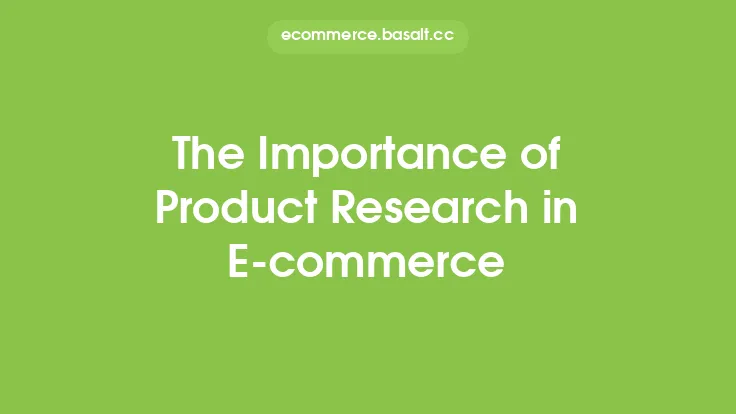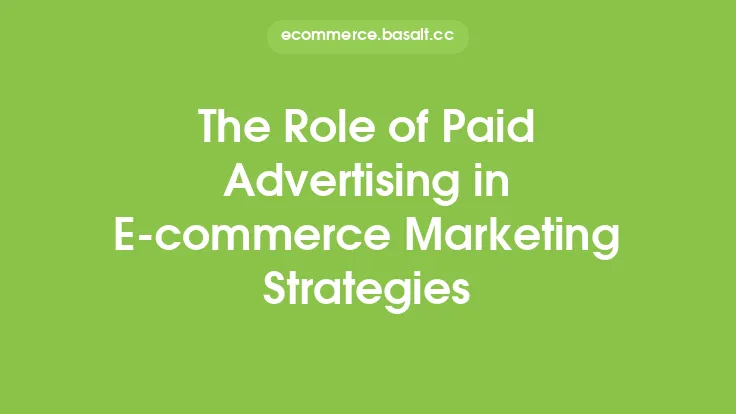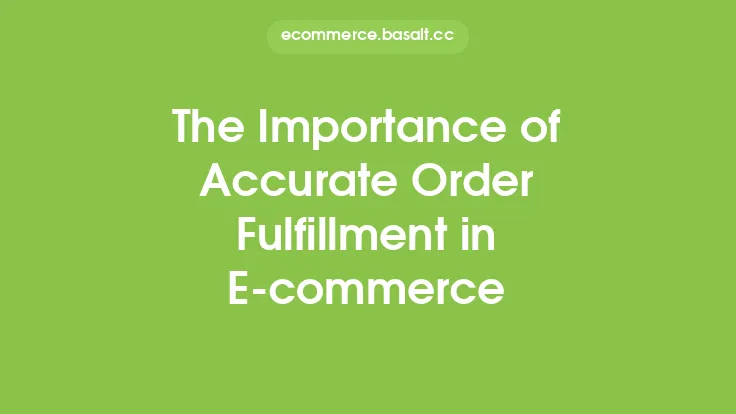In the realm of e-commerce, advertising plays a pivotal role in driving sales, revenue, and brand awareness. Among the various advertising strategies, targeted advertising stands out as a crucial element in e-commerce marketing. Targeted advertising involves directing ads to specific groups of people who are most likely to be interested in a product or service, based on their demographics, behaviors, interests, and other characteristics. This approach has become increasingly important in e-commerce, as it allows businesses to maximize their advertising budget, increase conversion rates, and build strong customer relationships.
Benefits of Targeted Advertising
The benefits of targeted advertising in e-commerce are numerous. Firstly, it enables businesses to reach their ideal audience, increasing the likelihood of conversion and reducing waste on irrelevant advertising. By targeting specific demographics, interests, and behaviors, e-commerce businesses can ensure that their ads are seen by people who are most likely to be interested in their products or services. This approach also helps to build brand awareness and credibility, as targeted ads are more likely to resonate with the target audience. Additionally, targeted advertising allows businesses to track and measure the effectiveness of their ads, making it easier to optimize and improve their advertising strategies.
Types of Targeted Advertising
There are several types of targeted advertising that e-commerce businesses can use to reach their ideal audience. Demographic targeting involves directing ads to specific age groups, genders, income levels, and other demographic characteristics. Behavioral targeting involves targeting people based on their online behaviors, such as search history, browsing habits, and purchase history. Interest-based targeting involves targeting people who have shown an interest in specific topics or products. Lookalike targeting involves targeting people who are similar to a business's existing customers or followers. Finally, retargeting involves targeting people who have previously interacted with a business's website or ads.
Platforms for Targeted Advertising
E-commerce businesses can use a variety of platforms to implement targeted advertising strategies. Google Ads is a popular platform for search-based targeted advertising, allowing businesses to target people who are searching for specific keywords and phrases. Social media platforms, such as Facebook and Instagram, offer a range of targeting options, including demographic, interest-based, and behavioral targeting. Native advertising platforms, such as Taboola and Outbrain, allow businesses to target people who are reading content related to their products or services. Finally, email marketing platforms, such as Mailchimp and Constant Contact, enable businesses to target their existing customers and subscribers with personalized ads and promotions.
Best Practices for Targeted Advertising
To get the most out of targeted advertising, e-commerce businesses should follow several best practices. Firstly, they should clearly define their target audience, based on demographics, behaviors, interests, and other characteristics. They should also set specific advertising goals, such as driving conversions, increasing brand awareness, or generating leads. Additionally, businesses should use high-quality ad creative, including images, videos, and copy, to grab the attention of their target audience. They should also use tracking and measurement tools to monitor the effectiveness of their ads and make data-driven decisions to optimize their advertising strategies. Finally, businesses should continually test and refine their targeting options, ad creative, and bidding strategies to ensure that they are getting the best possible return on investment.
Common Challenges and Solutions
Despite the benefits of targeted advertising, e-commerce businesses may face several challenges when implementing this strategy. One common challenge is ad fatigue, which occurs when people become desensitized to ads and stop paying attention to them. To overcome this challenge, businesses can use ad rotation, which involves switching between different ad creative and targeting options to keep their ads fresh and engaging. Another challenge is ad blocking, which involves people using technology to block ads from appearing on their devices. To overcome this challenge, businesses can use native advertising, which involves integrating ads into the content and user experience of a website or app. Finally, businesses may face challenges in measuring the effectiveness of their targeted ads, particularly if they are using multiple platforms and channels. To overcome this challenge, businesses can use tracking and measurement tools, such as Google Analytics, to monitor the performance of their ads and make data-driven decisions to optimize their advertising strategies.
Future of Targeted Advertising
The future of targeted advertising in e-commerce looks bright, with several trends and technologies emerging to enhance the effectiveness and efficiency of this strategy. One trend is the use of artificial intelligence and machine learning, which can help businesses to better understand their target audience and optimize their advertising strategies. Another trend is the use of voice-activated advertising, which involves targeting people who are using voice assistants, such as Alexa and Google Assistant, to search for products and services. Finally, the use of augmented reality and virtual reality advertising is becoming increasingly popular, allowing businesses to create immersive and interactive ad experiences that engage and convert their target audience. As e-commerce continues to evolve and grow, targeted advertising will play an increasingly important role in driving sales, revenue, and brand awareness for businesses of all sizes.





